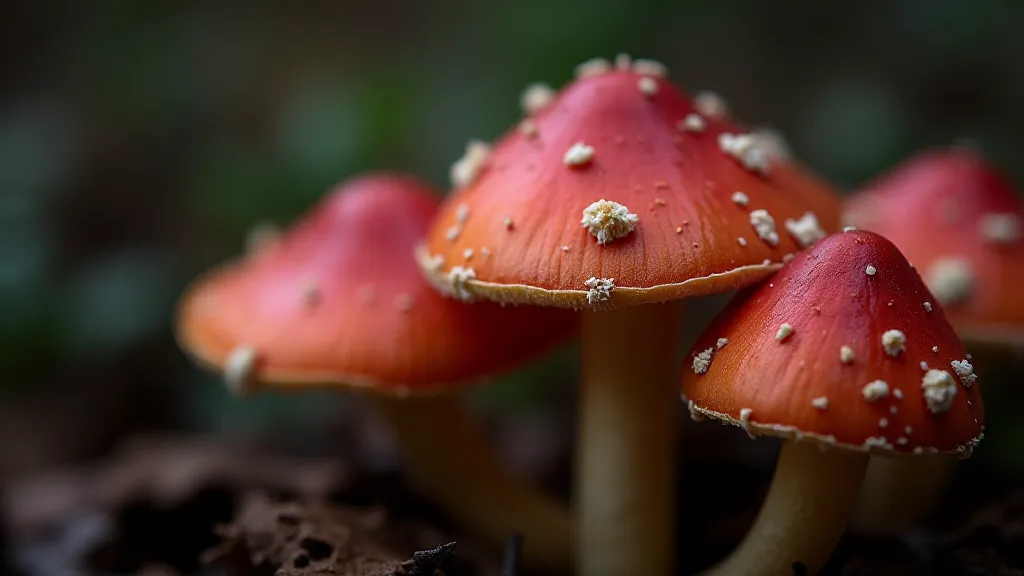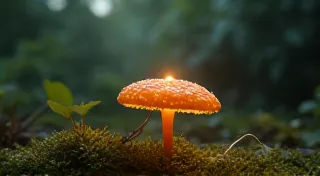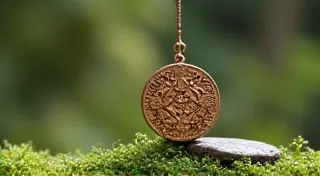Mycelial Metamorphosis: The Alchemical Notion of Fairy Rings
There's a peculiar magic that clings to old things. Not the dramatic, flashing kind, but a quiet resonance, a whisper of history held within grain and metal. I’m thinking, specifically, of antique accordions. The way their bellows sigh when pressed, the way the keys, worn smooth by countless hands, still manage to coax melodies from the past...it’s a feeling that connects me deeply to the narratives we’re exploring today: the folklore of fairy rings.
These circular patches of mushrooms, often appearing seemingly overnight, have captivated humanity for centuries. They’ve been viewed with reverence, fear, and wonder, and consistently woven into the fabric of regional beliefs. While many know them as fairy rings, a name dripping with enchanting mystery, the underlying theme across cultures is strikingly consistent: a powerful representation of transformation, decay, and the cyclical nature of existence – a deeply alchemical notion.
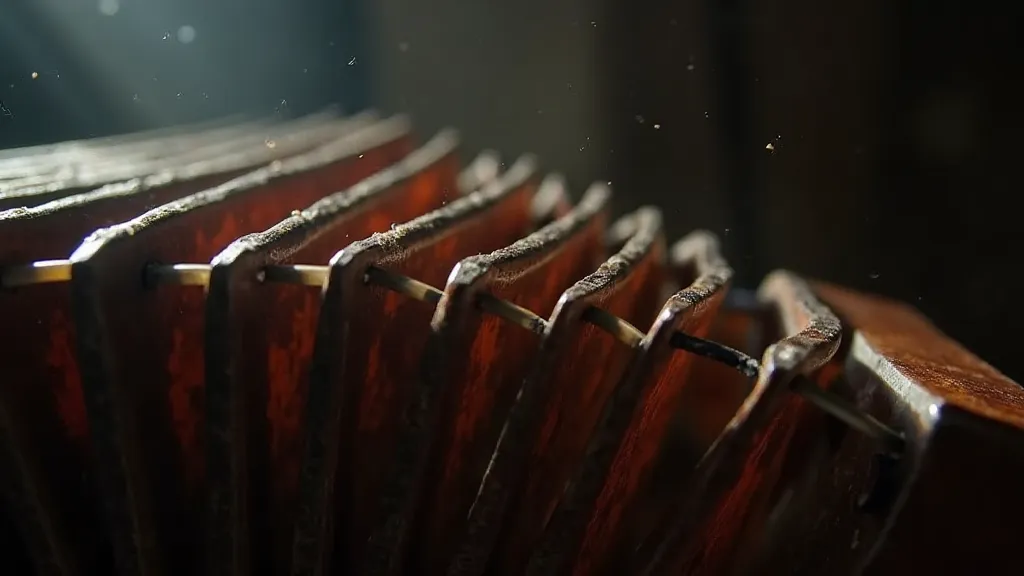
The Alchemy of Decay and Rebirth
Alchemy, at its core, isn't merely about transmuting lead into gold (though that’s the popular understanding). It’s a profound system of symbolism representing spiritual transformation. The process of nigredo, the “blackening,” is crucial: it signifies a stage of dissolution, of breaking down what was to make way for something new. Think of a seed – it must decompose, break free from its protective casing, before it can sprout into a plant. Fairy rings, with their ephemeral appearance and the very nature of the mushrooms they create, mirror this process beautifully.
The mushrooms themselves, as a fruiting body, are simply the visible manifestation of a vast, interconnected network of mycelium hidden beneath the surface. This unseen network, tirelessly working, is the true engine of change. It consumes, it connects, it transforms the earth around it. The ring itself – the circular form – is often interpreted as a representation of wholeness, eternity, and the cyclical nature of time. It’s a liminal space, a threshold between worlds, a place of potent magic.
Regional Variations: A Tapestry of Beliefs
Across Europe, and beyond, the folklore surrounding fairy rings is remarkably diverse, yet underpinned by these alchemical themes. In Scandinavia, they were often believed to be dancing grounds of the elves or alfar. To stumble upon one was to risk being forced to dance until exhaustion, or worse, to be taken away to the Otherworld. This echoes the alchemical notion of being “dissolved” – stripped of one's identity and swept away by a transformative process.
In England, the belief was widespread that fairy rings were portals to the fairy realm, places where the veil between our world and theirs was thin. Touching a fairy ring was said to bring bad luck, or even a curse, unless certain rituals were performed – often involving walking around the ring backwards, or leaving an offering of milk or honey. This highlights a need to appease the power inherent within the ring, to navigate the liminal space with respect and caution.
Further east, in Slavic cultures, fairy rings, often called chudesnye koltsa, were sometimes considered to be remnants of ancient pagan rituals, places where sacrifices were made to spirits of the forest. The mushrooms themselves were believed to possess magical properties, capable of inducing visions or acting as potent healing agents – if handled with the proper respect and knowledge.
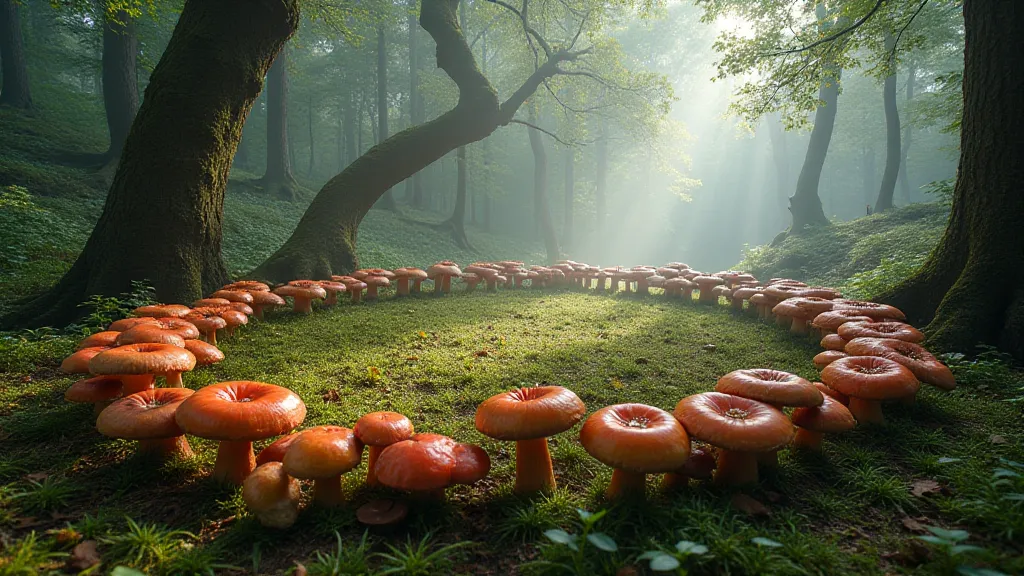
The Craftsmanship of Belief: Restoring Accordions and Myths
There's a parallel to be drawn here with the restoration of antique accordions. It’s not just about repairing the physical instrument; it's about preserving a legacy, about understanding the artistry and skill that went into its creation. A skilled restorer doesn't simply replace broken parts; they strive to understand the original design, the intended sound, the story behind the instrument. They breathe new life into it, connecting the past with the present.
Similarly, understanding the folklore of fairy rings requires more than just cataloging the regional variations. It demands a sensitivity to the underlying symbolic language, a willingness to appreciate the wisdom encoded within these ancient beliefs. It’s about recognizing that these stories aren’t just whimsical tales; they’re reflections of humanity’s profound connection to the natural world and our enduring fascination with transformation.
Consider the bellows of an old accordion, meticulously handcrafted from wood and leather. Each crease, each imperfection, tells a story of time and use. Just as the mycelium beneath the fairy ring silently transforms the earth, the bellows silently expand and contract, bringing forth music and emotion. The very process of restoration, of painstaking repair, mirrors the alchemical journey itself – a process of breakdown and rebuilding, of revealing the beauty that lies hidden beneath the surface.
Beyond the Ring: Embracing the Cycle
The folklore of fairy rings isn’s merely about fear or wonder; it’s an invitation to embrace the cyclical nature of existence. It reminds us that decay is not an ending, but a necessary prelude to renewal. Just as the mushrooms bloom and fade, and the mycelium patiently continues its work beneath the surface, so too does life itself ebb and flow, constantly transforming and evolving.
The next time you encounter a fairy ring, take a moment to consider the profound symbolism it embodies. Listen to the rustling of the leaves, feel the damp earth beneath your feet, and allow yourself to be transported to a realm of ancient magic and enduring wisdom. Perhaps, if you listen closely, you’ll hear the faint echo of a forgotten melody – the sigh of an old accordion, and the whispered secrets of the earth.
